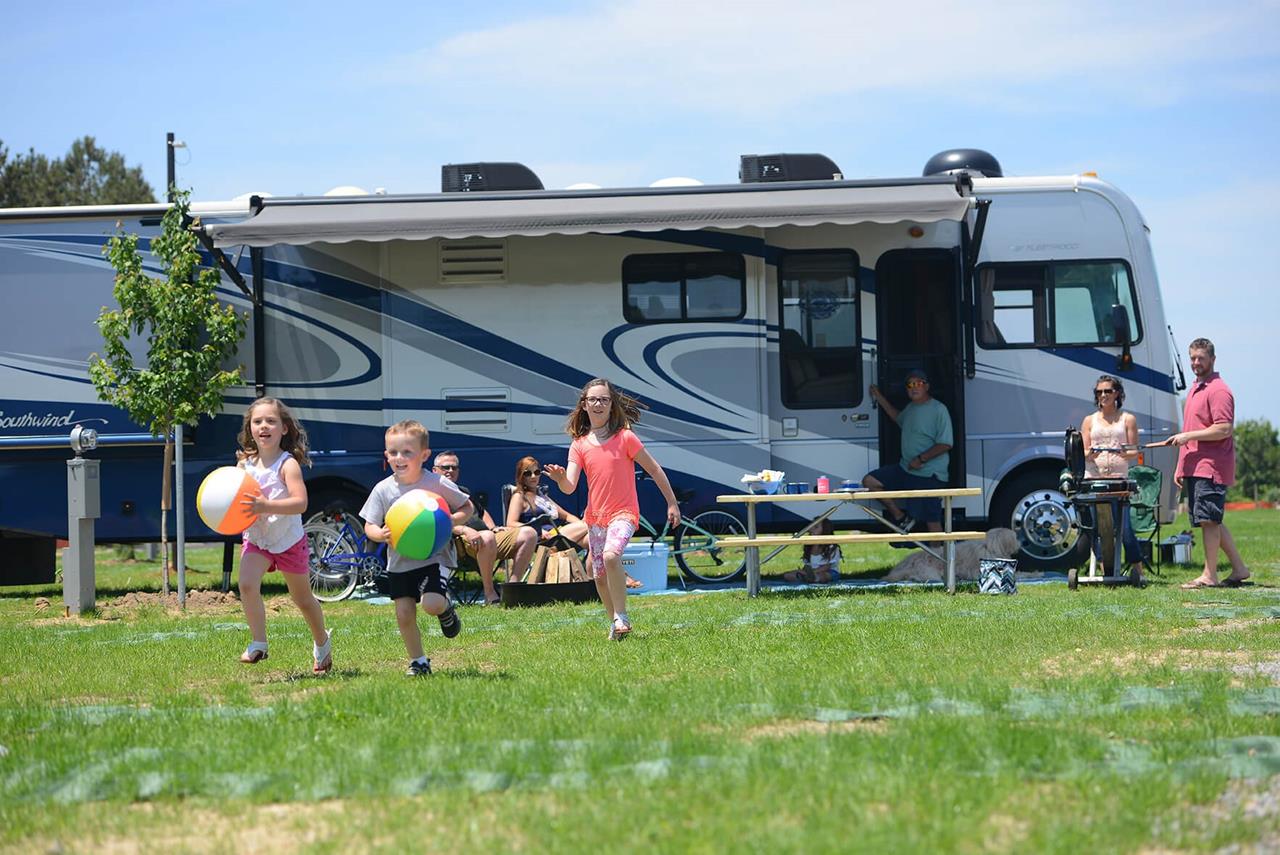
Cold weather travel brings plenty of snowy sights to enjoy. If you’re RVing this winter, it’s important to take extra considerations for road safety in icy conditions. We’re sharing safety tips for driving your RV in the snow, with insight for towable and motorized units alike. So whether you’re towing a travel trailer, driving a Class C motorhome, or hitting the road in any other type of RV, these tips are here to help you do so with safety in mind.
Safety Considerations When Driving an RV in Snow or Ice
If you’re a pro at driving your passenger vehicle in the snow, you may feel more confident driving your RV in the same conditions. But if you’re not skilled at navigating snowy or icy roads in a smaller vehicle, driving your RV in the snow may be a challenge. Be sure to check weather conditions before setting out to ensure you’re comfortable driving in that day’s weather. If a snowstorm, black ice, or other weather conditions that are hazardous for driving are present, consider hitting the road another day when it’s safer to do so or changing your route entirely.
Before driving RVs in the snow or ice, we strongly recommend having your setup thoroughly examined with a seasonal RV inspection to ensure everything is ready for the conditions you’ll be driving in. You’ll need to make sure that your brakes, tires, and driving safety systems are in optimal shape. If you’re towing your RV, you’ll need to make sure that your hitching system is in good condition and consider upgrading the connection between your RV and towing vehicle. You should also ensure your towing vehicle is ready for the road.
Do RVs Need Winter Tires?
Yes, depending on how severe the roads are where you’re driving, winter tires can be a great help for driving your RV in the snow. Consider switching to winter tires for your RV and any towing vehicles as well. Most motorhomes and towables come with standard RV tires that are ideal for non-winter conditions, so you may want to switch to snow tires for your wintertime RVing.
Are RVs Good in Snow?
There are different types of RVs that offer unique features for driving in the snow. Some RVs, such as Class B motorhomes, come in four-wheel drive options that can better meet these driving conditions. Many new RVs include safety-focused driving features that make operating the vehicle in adverse conditions, such as snow, safer.
Most motorhomes are rear-wheel drive, which can be used to navigate snowy conditions when extra considerations are taken. Whether your RV is rear-wheel, front-wheel, or four-wheel drive, there are options for snowy driving.
Follow these tips for driving an RV in the snow:
- Take things slowly and stop if needed to wait for weather improvements
- Leave three times the normal amount of space between your RV and other vehicles
- If you begin to slide, gently pump the breaks to regain control
- Use your low beams or avoid nighttime driving if possible
- Use RV tire chains in applicable conditions
- If you’re towing an RV that begins to sway, gently apply trailer brakes
When driving your RV in the snow, you may find it takes longer to reach your destination than in warmer months. This is because you’ll need to leave yourself extra time for stopping, going slowly, possibly attaching tire chains, adjusting your equipment, and taking turns cautiously.
Warm-Weather RVing Destinations
Ready to enjoy some wintertime RVing without having to drive in the snow or undergo RV winterization? We invite you to visit our Florida RV resort, where you can visit any time of the year to enjoy the warm sunshine and easy driving!



